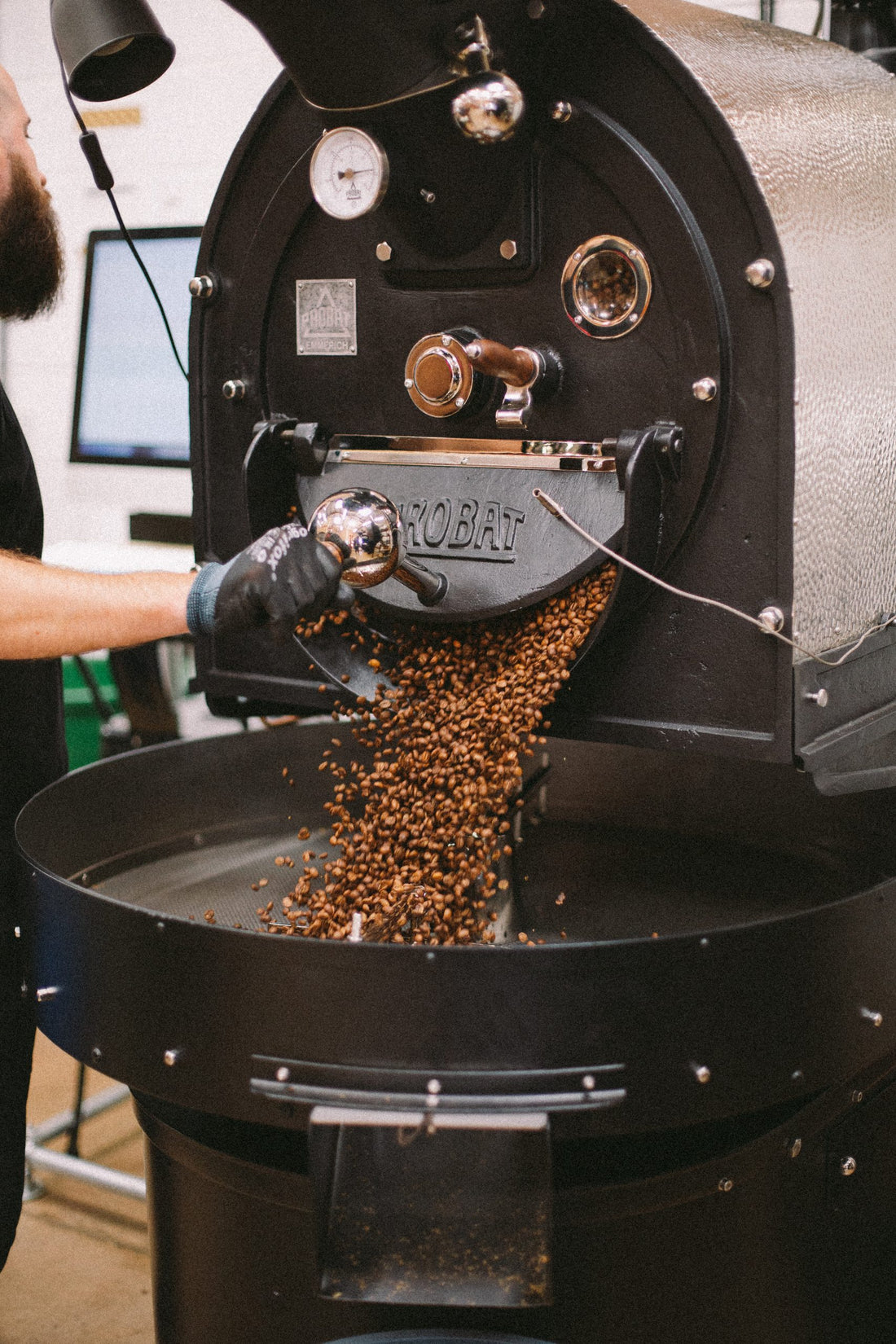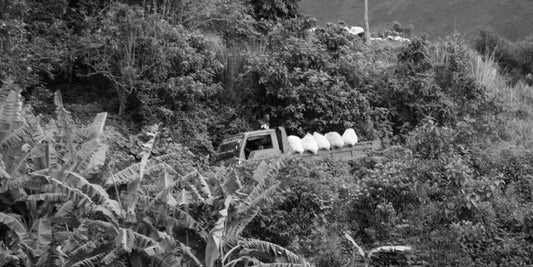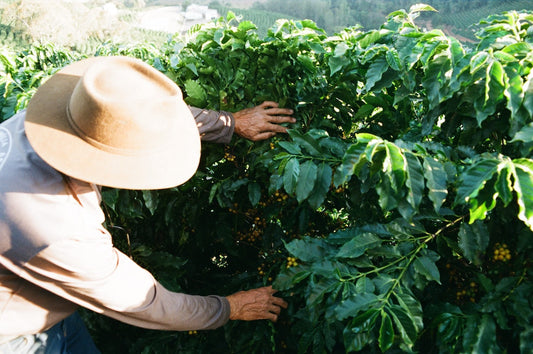
Refurbishing our Probat roasting machine
We’ve finally finished refurbishing our 1971, Probat LG12, roasting machine and it’s in the best shape of its life (shame the same can’t be said for our backs). Queue fireworks and fanfare. You might be wondering – why all that effort for something so ancient? Luckily, we’ve written this blog to explain.
If you hadn’t guessed already, our roasting machines are the heart and soul of Roastworks…the name sort of gives it away. Breathing new life into old machines is what revs our engines and from day one has been a big part of what we do. It did cross our minds at one point to look at buying a new roasting machine – simply to save time, but it just didn’t feel right.
We’ll start with a bit of history with the machine itself. It was built in 1971 and we bought it in 2015 from another roaster in the South West. Whilst it was ok, mechanically it was a bit sketchy and aesthetically it wasn’t up to standard. It’s the second roaster we bought (after the 5kg STA Impianti), and we’ve been using it ever since for smaller batches. However, as time has gone on it’s been screaming out for a full mechanical and cosmetic refurb.
BEFORE

In 2019 we decided to get a new set of burners and a new external fan and cyclone built by Brian Larson in Berlin. He’s a bit of a legend and spends his time refurbishing old Probats and building custom parts for old roasting machines. Follow him on Instagram @hoejmark if you want to geek out. This small change seriously improved the controllability of the machine, which was great, but it also highlighted how haggard the rest of the machine was.
We launched a new three-tier range back in October 2020 and all the coffees in that range (The Classic, The Curious and The Contemporary) are roasted on the Probat. The only way we could start the refurb was by taking the new range offline for a few months whilst we did the essential work. So, two months ago we went ahead and bit the bullet to improve the coffee we were roasting on it.
We’ve listed below some of the improvements we made for anyone interested. This gets a bit geeky, so anyone who doesn’t want to hear about motor speeds and drum bearings maybe tap out now, or just look at the before and after photos.
- This machine has undergone a full cosmetic refurb. We loved the Probat before, but it just didn’t quite look like part of the roastery (especially next to our other roasting machine, the 60kg Barth Menado). We think these machines look stunning when painted and shined up, so we really wanted to do it justice. The whole machine was dismantled and shot blasted. The high temperature parts were painted with high temp spray, and all the other bits were powder coated (by the lovely First Choice Finishes in Exeter). We also renickled the shiny bits (thanks to Nigel at S&T Electroplate for a great job), and got new walnut wooden handles turned for the trier and drum doorknob.
- We totally refabricated the perforated stainless steel cooling pan base.
- All the bearings were replaced on the machine (SKF all the way).
- The front drum bearing had seized a few years back and had ground a groove out of the axle. This had to be milled and sleeved to the original diameter, and now it’s like new.
- We also made improvements to the motor and drive speeds with a new, more powerful 3000 rpm motor (the original was 1370 rpm) running off an inverter drive. These machines were originally built as shop roasters, so everything was built to function off one motor, which is great for simplicity but terrible for everything else.
- There was only one fan that was designed to be used for the drum exhaust and the cooling pan. We decided to get a separate fan that is dedicated to the main drum and the original fan is now used for the cooling pan.
- We’ve also changed the gearing so we can use a much faster motor to power the cooling fan, meaning that the airflow for cooling is better and cooling times have improved.
- In the late 90s, someone did a partial refurb and stuck Rockwool in the drum cavity, which meant that the roaster was really bad at retaining heat. So we replaced the Rockwool with some Calcium-Magnesium Silicate high-efficiency insulation material.
- To make the thermal efficiency even better we replaced the inner drum shroud with thicker steel. This means we’re now using less energy during roasting and reducing the risk of the shroud burning out or distorting, a common problem with Probat L12s.
- The base plate of the drum (which the burners poke through) was warped and I’d had to hack the hole which the burners poke through when we fitted the new burners a few years ago. This meant there was a lot of hot air being drawn down from the burners into the back of the cooling pan while cooling, increasing cooling time. We decided to replace this base plate with thicker steel and a much tighter hole for the burners. This has really helped with cooling times.
- We also had new electrics installed in the original electrical box that lives on the side of the roaster. We really liked the size and look of the original box, but the gubbins inside were archaic and unsafe. We now have state of the art inverter drives on all the motors (all Schneider, of course) and industry standards safety features.
- We did some work on the gas train to simplify its path and fitted a new pilot burner, piezo igniter and safety valve.
- Before the refurb, the capacity was only 8kgs because the machine didn’t have enough power or airflow. Now it can roast 10kgs – the machine has much more power, it’s more controllable and much more responsive. It’s a massive win all round – we’re so stoked.
AFTER

We’re buzzing to have it back up and running, it’s an absolute dream to roast on! It really looks the part in the roastery now too. Yeah, we could have bought a new roaster instead, but that’s not what we do. We love breathing new life into old kit, and we believe this roaster now outperforms most modern roasters. It has a soul and a story, and that’s important to us.
Our three-tier range is back online again, which is probably what we’re most pumped about – we really missed the process of selecting new coffees over the past few months. You can see the first release back here, they won’t disappoint.




